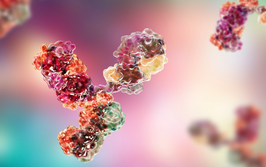Food for Thought
If we learn more about drug–nutrient interactions, we may be on the path towards better medicines
Araksya Topchyan | | Opinion

Vitamins are considered safe until proven unsafe; whereas pharmaceuticals are considered unsafe until proven safe. The two follow very different development pathways and are subject to different guidelines and regulations, but both are produced with the aim of improving health. The benefits of pharmaceuticals must be proven for them to reach the market, but for vitamins and lipids, there are still some debates about their role beyond nutrition. We do know, for instance, that vitamins and minerals are essential for health, as deficiencies can lead to disease (consider scurvy or rickets). But is there also a link between vitamins and their interactions with pharmaceuticals? When considering adverse drug interactions, drug-drug interactions typically come to mind, but interactions between drugs and nutrients also exist – and they can be both positive and negative.
Drug-nutrient reactions (DNIs) are defined as alterations in the pharmacokinetics or pharmacodynamics of a drug or nutritional element, or a compromise in the nutritional status of an individual as a result of drug intake. To determine the impact of drugs on patient health, DNIs can be loosely classified into the following categories:
- Class 1: effect of obesity and malnutrition on drug action
- Class 2: effect of nutrition on drug action
- Class 3: effect of specific nutrients or dietary supplements on drug action
- Class 4: effect of drugs on nutrition status
- Class 5: effect of drugs on nutrient status
Understanding and addressing DNIs is particularly relevant as the population ages. With more individuals experiencing multimorbidity, polypharmacy is becoming more prevalent. Currently, the populations most at risk of DNIs include elderly people, patients with chronic conditions, individuals who are malnourished, pregnant women, and infants.
Importantly though, new research also suggests emerging therapeutic benefits for vitamins and lipids in selected individuals and population groups (1), which may mean that DNIs could have positive effects and benefit patient health in some cases.
Vitamins and lipids are molecules that humans receive primarily through food intake. Their role, by nature, is to maintain important processes in our bodies, as well as support overall health and wellbeing. Increasingly, questions are being asked about how vitamins and other nutrients are linked with disease. More research is evidently required, but from our cooperation with clinical researchers around the world, we know that vitamins and lipids can possess therapeutic effects in disease conditions.
Several associations have already been made between certain drugs and nutrients, which continue to shape future research in the field; for instance, interactions have been observed between statins and EPA and DHA fatty acids – here, statins may alter the balance of omega-3 and omega-6 fatty acids in the body (2). Examples of where other common DNIs occur include contraceptives and folate, proton pump inhibitors and vitamins C and B12 and metformin – for type 2 diabetes – and vitamin B12.
As a more detailed example, lower back pain is one of the world’s most common ailments and the second most frequent symptom-related reason for outpatient visits after the common cold. To treat lower back pain, non-steroidal anti-inflammatory drugs (NSAIDS) are typically prescribed to patients. Although NSAIDS have a well-established efficacy and safety profile, recent research highlights the potential role of vitamin B complex i.e. vitamin B12, vitamin B1 and vitamin B6 as an adjunct to NSAID therapy (3). Though the exact mechanisms for vitamin B complex efficacy in the treatment of lower back pain are still largely unknown, the prevailing hypothesis involves increasing afferent inhibitory control of nociceptive neurons at the spinal cord, improving sensory nerve conduction velocity, and reducing neuronal hyperexcitability by altering sodium currents in injured dorsal root ganglia. In combination with NSAID therapy, vitamin B complex has the potential to produce synergistic effects.
Other interactions that could prove beneficial to patients include the addition of EPA and DHA in conjunction with conventional cytotoxin therapies for cancer; results have shown a two-fold increase in therapy response rate and clinical benefit when compared to patients undergoing the same treatment without supplementation (4).
In my view, pharmaceutical and healthcare communities need to be more aware of the potential relevance of DNIs. To avoid putting patients at risk, drug developers should take more responsibility by including drug–nutrient evaluations as part of the drug development process or communicating new information about DNIs to healthcare professionals, so that they can give the best medical advice to patients.
In addition to this, we need to generate more evidence about the role that vitamins and lipids play in disease management – and this may open up new opportunities for drug developers to innovate and bring new therapeutic applications to the market. Vitamins and lipids are already proven and safe molecules with new science continuously supporting their evolving benefits in patient care and health. Understanding and leveraging the potential role of vitamin APIs and lipids as intermediates therefore offers an avenue for fast, safe and cost-effective innovation.
The importance of improving our understanding becomes evident when you consider the benefits of minimizing harmful DNIs, or promotion of beneficial interactions:
- Medications achieve their intended effects
- Improved compliance to medication
- No need for additional medications or higher dosage
- Reduce adverse side effects and disease complications
- Manage co-morbidities in chronic patients
- Reduce the burden and costs on the healthcare system.
Chronic patients are most exposed to DNIs and, with the aging population, we know that the number of individuals who will experience chronic illness will increase. Therapeutic areas, such as diabetes, cardiovascular disease, inflammatory bowel disease and pain, are where we think collaborations with partners in the pharmaceutical industry will be most beneficial. In these areas, we hope that by transferring our knowledge of DNIs onto drug developers, we will inspire effective patient solutions.
- S Peter et al., “Public health relevance of drug-nutrition interactions,” Eur. J. Nutr., 56(Suppl 2), 23-36 (2017).
- M de Lorgeril, “Recent findings on the health effects of omega-3 fatty acids and statins, and their interactions: do statins inhibit omega-3?” BMC Med., 11 (2013)
- M Marquez, S Guzman, “Systemic Review on the Use of Diclofenac/B Complex as an Anti-Inflammatory Treatment with Pain Relief Effect for Patients with Acute Lower Back Pain,” J Pain Relief, 4, 2-5 (2015).
- K Marshall, RJ Winwood, “EPA and DHA omega 3s as a potential adjunct to chemotherapy in the treatment of cancer,” Agro. Food Industry Hi Tech., 28, 19-22 (2017).



















